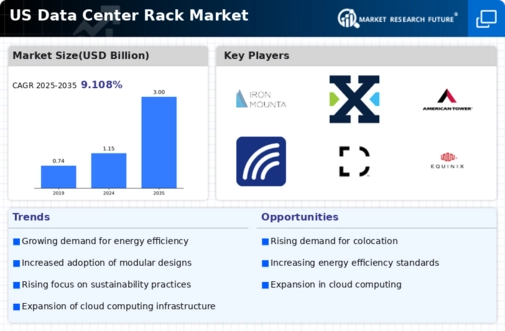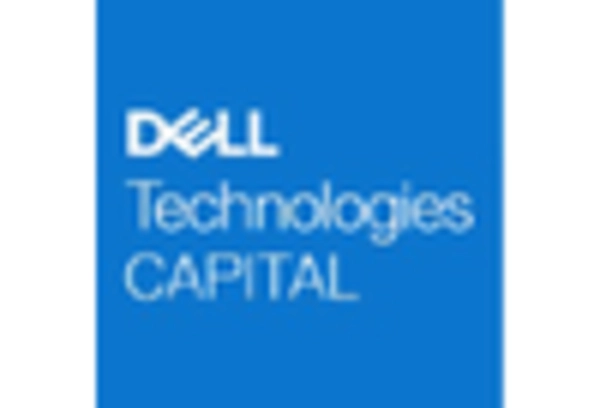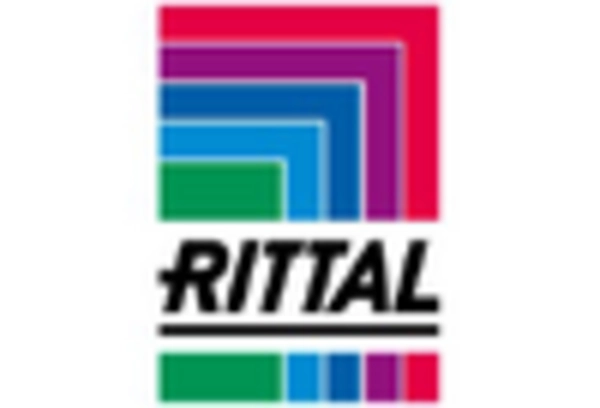Expansion of Edge Computing
The proliferation of edge computing is reshaping the landscape of the data center-rack market. As organizations seek to process data closer to the source, the demand for localized data centers is increasing. This trend is particularly evident in sectors such as IoT and autonomous vehicles, where real-time data processing is essential. By 2025, the edge computing market in the US is expected to surpass $15 billion, indicating a significant shift in data processing paradigms. Consequently, the data center-rack market must adapt to accommodate smaller, modular racks that can be deployed in diverse environments. This evolution presents opportunities for manufacturers to innovate and cater to the unique requirements of edge computing.
Growing Cybersecurity Concerns
As cyber threats become more sophisticated, the data center-rack market is witnessing a heightened emphasis on security measures. Organizations are increasingly aware of the vulnerabilities associated with data storage and management, prompting investments in secure rack solutions. The cybersecurity market in the US is projected to reach $300 billion by 2025, reflecting the urgency for enhanced protection. Data center operators are now prioritizing racks that incorporate advanced security features, such as biometric access controls and integrated monitoring systems. The data center-rack market is thus evolving to meet these demands, ensuring that infrastructure not only supports operational efficiency but also safeguards sensitive information against potential breaches.
Rising Demand for Cloud Services
The increasing reliance on cloud computing is a pivotal driver for the data center-rack market. As businesses migrate to cloud-based solutions, the need for efficient data storage and management intensifies. In 2025, the cloud services market in the US is projected to reach approximately $500 billion, indicating a robust growth trajectory. This surge necessitates the deployment of advanced data center infrastructure, including optimized rack solutions. Consequently, data center operators are compelled to invest in scalable and high-density racks to accommodate the growing volume of data traffic. The data center-rack market is thus experiencing a transformation, as providers seek to enhance their offerings to meet the evolving demands of cloud service providers.
Increased Focus on Energy Efficiency
Energy efficiency has emerged as a critical concern within the data center-rack market. With energy costs rising and environmental regulations becoming more stringent, operators are prioritizing energy-efficient solutions. The US data center sector is estimated to consume around 70 billion kWh annually, prompting a shift towards racks designed to optimize power usage. Innovations such as hot aisle/cold aisle containment and advanced cooling technologies are gaining traction. The data center-rack market is responding by developing racks that not only support high-density configurations but also enhance airflow management. This focus on energy efficiency is likely to drive investment in new technologies and infrastructure, ultimately benefiting both operators and the environment.
Technological Advancements in Rack Design
Technological innovation is a driving force in the evolution of the data center-rack market. The introduction of advanced materials and design methodologies is enabling the development of more efficient and versatile racks. Innovations such as lightweight materials and modular designs are enhancing the adaptability of racks to various data center environments. In 2025, the market for advanced rack solutions is expected to grow by approximately 20%, reflecting the increasing demand for customized solutions. The data center-rack market is thus positioned to benefit from these advancements, as operators seek to optimize space utilization and improve overall performance. This trend underscores the importance of continuous innovation in meeting the dynamic needs of the data center landscape.

















Leave a Comment